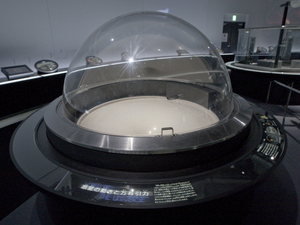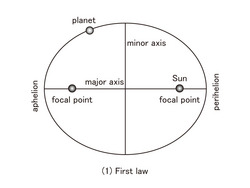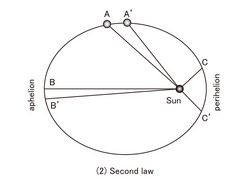Nagoya City Science Museum
TOP > Exhibition Guide > Keyword Search > Starting with "O" > orbital motion > Planetary Motion and Universal Gravitation
Planetary Motion and Universal Gravitation

Purpose of Exhibition
Kepler, the German astronomer, discovered the laws that govern the movement of the planets.
This exhibit will show you how the planets, such as the earth and the Mars, move around the sun. Suppose the hole in the center is the sun and balls are planets. As you shoot a ball out, the farther from the center hole, the slower your ball moves; the closer the faster.
This device was originally installed in the former Astronomy Building. The exterior was renovated; the curved surface and the mechanisms are the same in the past, just overhauled.


Additional Knowledge
[Kepler's Laws of Planetary Motion]
The German astronomer, Johannes Kepler formulated laws of planetary motion. Kepler’s three laws describe the following:
1. The Law of Ellipses: the planets form elliptical orbits with the sun as a focus.
2. The Law of Equal Areas: a ray coming from the sun to a planet sweeps out the same amount of area in the same amount of time, no matter where it is in its orbit.
3. The Law of Harmonies: the square of the orbital period of a planet is proportional to the cube of the semi-major axis of its orbit.
[How Does the Funnel-like Surface Work?]
Let’s look at the surface on which you shoot a ball. It is shaped like a funnel, with its slope increasing the closer to the center. This makes your ball move faster as it nears the center and slower at the farther points, just like the planets orbiting the sun.
[The Discovery of Kepler’s Laws]
Johannes Kepler (1571-1630) sorted through the precise Mars observations of his senior Tycho Brahe, and found out the laws of planetary motion.
Kepler assumed that there was some sort of “magnetic” interaction between the planets and the sun responsible for the planetary motion. This turned out to be wrong, thanks to Newton’s discovery of universal gravitation. Nevertheless, Kepler’s work had a profound impact on the subsequent development of astronomy.
This page was last edited on 28 June 2022.
Article by Yoshitaka Yamada, curator and Astronomy Section
